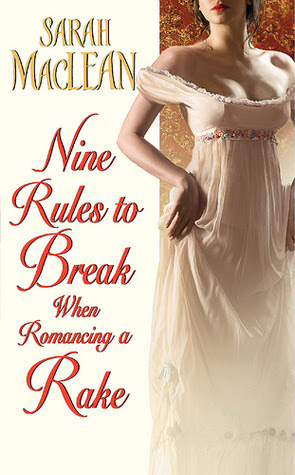Lady Hathaway is quite the (secret) scandal. She's barely passing for being "in mourning" after her husband dies due to her midnight trysts at a rented house with her former sweetheart. However, what's amazing to me is how no one found out! Did Lady Hathaway have no friends, no family members? Did no one care where she went or who she was dallying with? Lady Hathaway's Indecent Proposal was a nice short novella with a tiny bit of drama and a heckuva lot of introspection about motivation for one's actions and how the choices we make today will affect one's future.
Summary
The week after her older husband passes away, Lady Miranda Hathaway propositions her former beau, Lord Andrew Sanderson, in an attempt to get her with child before the courts can determine that there is no heir to the estate. Though Andrew is shocked by the deceit, he decides to go through with the 3-week arrangement in an attempt to (1) get Miranda out of his system and (2) get back at the guy who stole his girl by putting his own bastard in a position of wealth and privilege.Only, there will be no child. And Miranda is and always has been aware of that fact.
So why does she want this? Why does she do it?
Because she can. And because now might be the only time for her to get what she's always wanted: skillful lovemaking from the man of her dreams.
Now, let's take a step back for a second and talk about Lady Hathaway's Indecent Proposal. First and foremost, this is a very short story (estimated at about 74 pages). I don't even think you can get it as a hard copy. And it goes fast. On the first day you're in Miranda's drawing room, talking about the arrangement and thinking things over, then BAM! The next day the agreement starts. We fast forward through a huge chunk of the 3 weeks and then we're with them on their last night together. Shortly thereafter the book ends. Whew! We don't get a lot of conflict here-- it's mostly internal on the part of Lord Sanderson--and we really don't meet any other character except for the heir to the Hathaway estate, Viscount Hathaway's nephew, James Hathaway.
My Take
If you're not overly critical about plot dynamics, you might really enjoy the writing and the steamy scenes in the house that Andrew rents. Those are good. You might also want to read something that will only take an hour of your time and cost $0.99. Both great reasons to get a new book!I can't say that I really loved this book, and I'll most likely never read it again..... which, in my world, is just unheard of. I can reread the same book 10 times and still cry and laugh out loud. But for this one, once was enough for me. What happened here was that you could have had an amazing NOVEL, not novella, and we could have added a lot more drama/conflict/complications here to make this a much more fascinating read. The plot line was way too cool for such a short book; it felt like we didn't get QUITE the experience we thought we were signing up for. When you have a short book, you need to have a small conflict, and Lady Hathaway's Indecent Proposal had the bones to be a great big mess that was contained into 74 pages for no other reason than because it was slated as a novella.
Lady Hathaway's Indecent Proposal reminds me of a similar storyline from one of my favorite authors, Jo Beverly. In her book Secrets of the Night, Lord Brand Malloren is held hostage by Lady Rosamunde Overton. Obviously it's not the same story, but the broad plot is that Rosamunde is trying to get an heir for her husband, who is very ill, because they do not want the estate to go to Lord Overton's nephew. She finds Lord Brand on the side of the road (poor guy was drugged and left to die) so she nurses him back to health and decides that, in exchange for saving his life, she wants him to give her a child. At the time, though, he doesn't quite think that's what he's doing, of course. ;P It's a conflict worth the number of pages that it's written on. Lady Hathaway's Indecent Proposal could have definitely used at least 100 more pages to add more characters (ie, more drama), more tangible conflicts/obstacles to their relationship, and a much better ending. For some reason, though, it crammed a ton of potential fireworks into a teeny tiny itty bitty little e-book.
So tiny!
Sometimes, though, you just want a quick read with a steamy scene or two and a dramatic "break-the-door-down" ending. For all of you lovely ladies, I hope you enjoy Lady Hathaway's Indecent Proposal!"
Stats:
Lady Hathaway's Indecent Proposal (Hathaway Heirs) by Suzanna Medeiroshttp://www.amazon.com/Hathaways-Indecent-Proposal-Hathaway-ebook/dp/B00DYEBOM2
4.7 out of 5 stars (3 reviewers on Amazon.com)
$0.99 on Kindle



